Sentaero v2VTOL Performs BVLOS Utility Inspection
Soaring Eagle Imaging Performs 51 Mile BVLOS Utility Inspection in 6 Hours Using Censys Technologies Sentaero v2VTOL
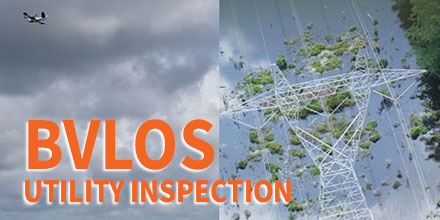
Hurricane Barry made landfall in Louisiana on the afternoon of July 13, 2019. In the aftermath, critical infrastructure needed inspection, including power lines near Baton Rouge. With 25.5 miles of 500kV power lines as the target, it was imperative to expedite those inspections.
Growing Demand
Energy companies in the United States are under tremendous pressure to prepare for hurricanes. Every year, these companies spend hundreds of thousands of dollars to mitigate that risk. Even worse, with each threat it is never known if it is a false alarm or a natural disaster.
This past hurricane season, Soaring Eagle Imaging (SEI) served a major Louisiana energy provider. And, both parties reaped the benefits of their preparation.
SEI is a professional aviation organization and a partner/customer of Censys Technologies. The company utilizes unmanned technology for multiple inspection applications to serve a host of enterprise clients.
With 30,000+ manned aviation hours to accompany their 3,000+ UAS hours, SEI brings a strong safety culture to every operation. In total, SEI has been granted 17 emergency Beyond Visual Line of Sight (BVLOS) waivers.
“SEI is now positioned to safely perform BVLOS operations as a ‘normal’ daily mission," said CEO William Paden. “The experience gained proves SEI teams are exceptionally proficient in the tasks required to safely conduct these types of operations.”
Sentaero v2VTOL
SEI conducted BVLOS flights using a Censys Technologies Sentaero v2VTOL. Once determined that safe flights could be conducted, there were no remote visual observers.
In three missions, the single crew captured 51 miles worth of detailed information in 6 total hours of time in the field. This time included setup, tear-down, and transit.
The inspection helped quickly identify the scope of damage and corresponding locations. This vital data helped facilitate swift repairs.
“The level of professionalism from the entire Censys team is the reason our organization is able to continually set new standards in the UAV realm," said Paden. "The constant communication with the leadership and engineering team was instrumental in the aircraft performing to the level it did. Without Censys Technologies, SEI would not have been successful.”
BVLOS Demand
Currently, there are only 30 commercial entities with approved BVLOS waivers in the United States, making these flights rare.
“I’m ecstatic to see a great partner and customer of ours employ our technology with such an emphasis on safety to deliver exceptional value to energy asset owners. I could not be happier with the partnership we have in SEI, and I’m confident we’ll continue to set standards together," said Trevor Perrott, Censys CEO. "I’m grateful to the FAA for approving the operation without requiring remote visual observers. As the operation shows, the execution of BVLOS operations is both safe and economical.”
The entire line of Censys Technologies UAS and VTOL-hybrid solutions are now available at Unmanned Systems Source.

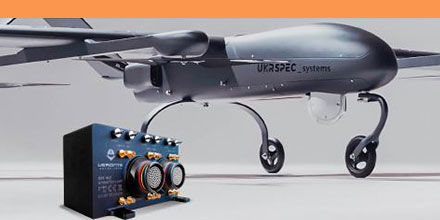
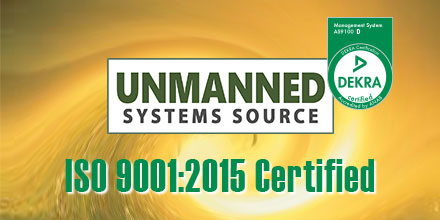 Unmanned Systems Source is pleased to announce that its Quality Management System (QMS) is officially certified to ISO 9001:2015 standards.
Unmanned Systems Source is pleased to announce that its Quality Management System (QMS) is officially certified to ISO 9001:2015 standards. 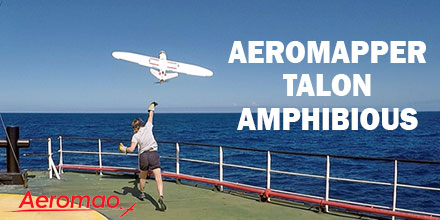 The Aeromapper Talon Amphibious by Aeromao is the world's first fixed-wing drone for commercial maritime operations that can belly land on water or parachute down.
With its dual cameras and 20km video link, it’s the perfect solution for observation, data collection and mapping.
The Aeromapper Talon Amphibious by Aeromao is the world's first fixed-wing drone for commercial maritime operations that can belly land on water or parachute down.
With its dual cameras and 20km video link, it’s the perfect solution for observation, data collection and mapping.
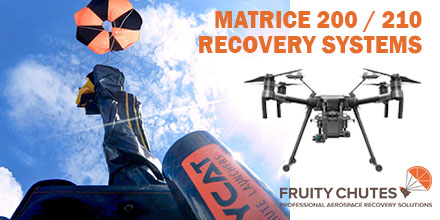 uity Chutes, the leading manufacturer of drone parachute recovery systems, adds to their line with the
uity Chutes, the leading manufacturer of drone parachute recovery systems, adds to their line with the 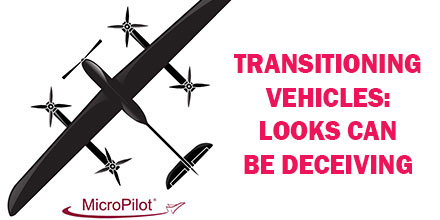 Transitioning UAVs, which combine fixed-wing aircraft with a multi-rotor, seem to be a favored development craft these days.
Transitioning UAVs, which combine fixed-wing aircraft with a multi-rotor, seem to be a favored development craft these days.